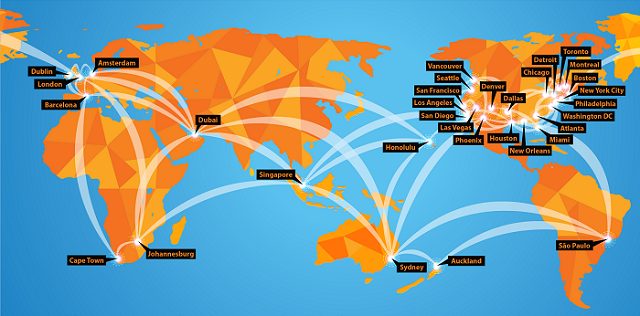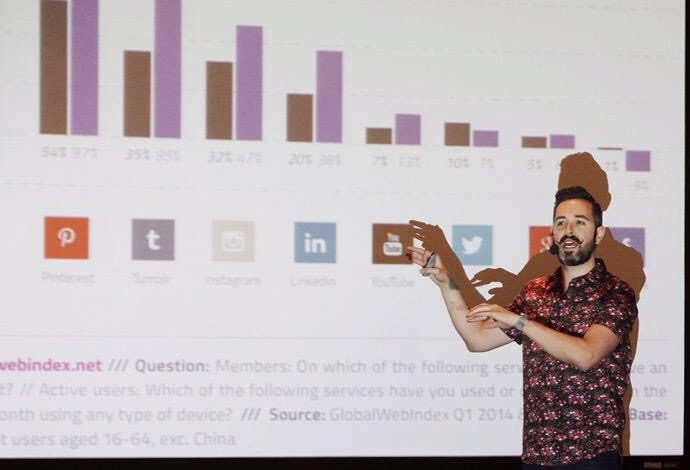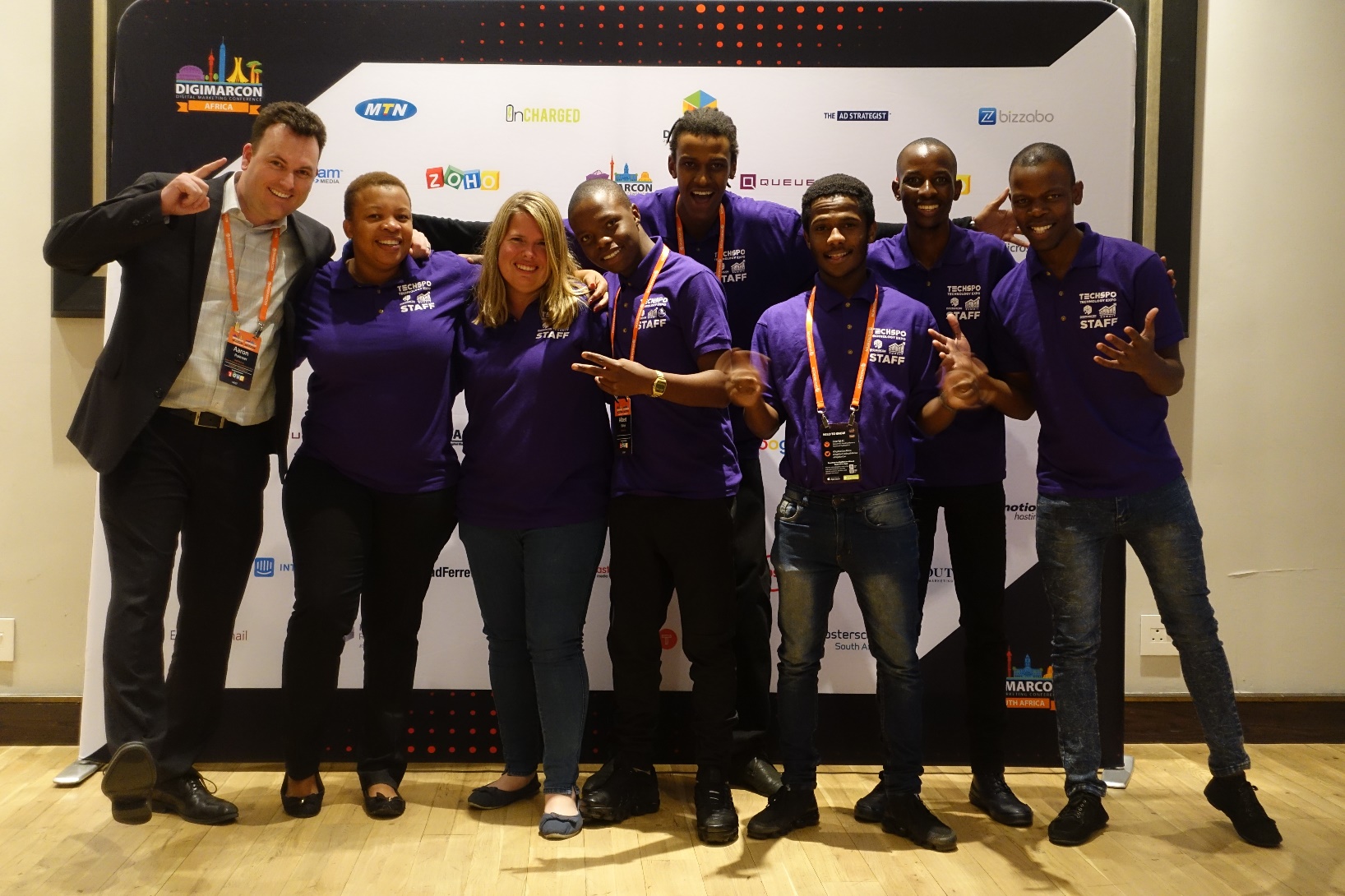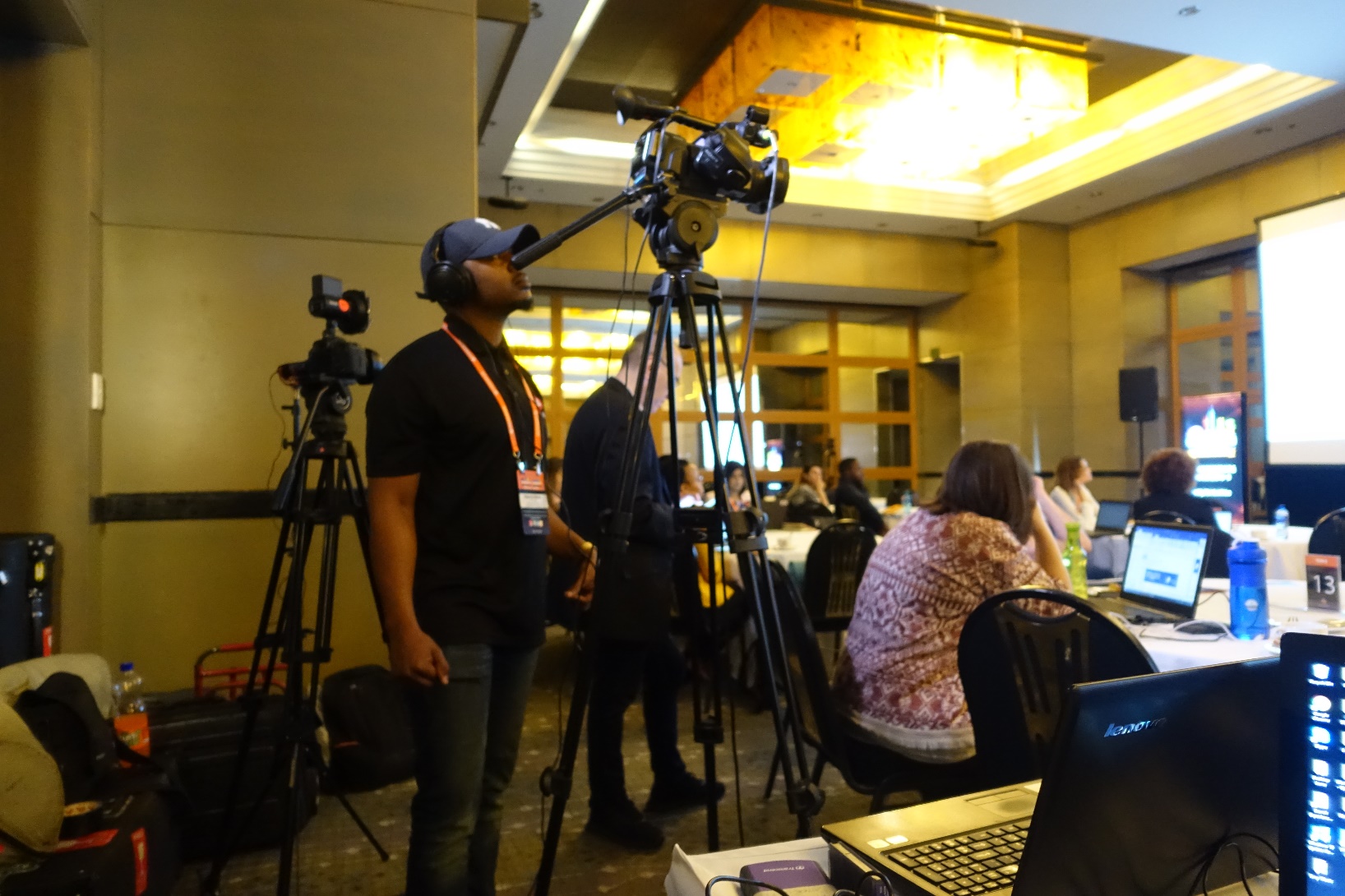Posts Tagged "Content Engagement"
Articles
- Best Marketing Conference Sponsorship
- What Does it Mean to Be an Exhibitor at a Conference?
- What Is the Biggest Social Media Conference?
- What Is an Innovation Conference?
- What Is a Typical B2B Event?
- What Are the Cloud Technology Events in 2025?
- Marketing Event Volunteer Opportunities: A Comprehensive Guide
- Digital Marketing Event Volunteer Opportunities Near Me
- What Does a Volunteer Do at a Conference?
- Is DigiMarCon Worth It?
- Is DigiMarCon Good?
- What is the Biggest Marketing Forum?
- What are Digital Marketing Conferences?
- Marketing Conference Exhibiting: Your Guide to Success
- Digital Summit Comparison: A Closer Look at DigiMarCon
- Digital Marketing Conference
- Digital Marketing Events: Your Guide to Success in 2025
- Marketing Conferences: Unlocking Your Business Potential in 2025
- What Is The Future of Digital Marketing in 2030?
- B2B Event Marketing Strategy: Unlocking Success For Your Business
- Why B2B Event Marketing?
- What Should a B2B Marketing Strategy Include?
- Top Marketing Conferences for 2025
- What Is the Future of Marketing in 2025?
Digital Marketing Conferences
- NORTH AMERICA
- DigiMarCon Cruise
(New Orleans, LA, USA) - DigiMarCon West
(Los Angeles, CA, USA) - DigiMarCon Northwest
(Seattle, WA, USA) - DigiMarCon Canada West
(Vancouver, BC, USA) - DigiMarCon Canada
(Toronto, ON, Canada) - DigiMarCon Canada East
(Montreal, QC, Canada) - DigiMarCon Florida
(Orlando, FL, USA) - DigiMarCon Gulf Coast
(Houston, TX, USA) - DigiMarCon Southern California
(San Diego, CA, USA) - DigiMarCon Midwest
(Chicago, IL, USA) - DigiMarCon Mid-South
(Nashville, TN, USA) - DigiMarCon Great Lakes
(Detroit, MI, USA) - DigiMarCon North
(Minneapolis, MN, USA) - DigiMarCon Central
(Kansas City, MO, USA) - DigiMarCon Texas
(Dallas, TX, USA) - DigiMarCon New England
(Boston, MA, USA) - DigiMarCon Mid-Atlantic
(Philadelphia, PA, USA) - DigiMarCon South Florida
(Miami, FL, USA) - DigiMarCon Southeast
(Atlanta, GA, USA) - DigiMarCon Central Florida
(Tampa, FL, USA) - DigiMarCon East
(New York, NY, USA) - DigiMarCon South Atlantic
(Charlotte, NC, USA) - DigiMarCon America
(Washington, D.C. USA) - DigiMarCon Northern California
(San Francisco, CA, USA) - DigiMarCon Rocky Mountains
(Denver, CO, USA) - DigiMarCon South
(San Antonio, TX, USA) - DigiMarCon Silicon Valley
(San Jose, CA, USA) - DigiMarCon Orange County
(Anaheim, CA, USA) - DigiMarCon Southwest
(Phoenix, AZ, USA) - DigiMarCon World
(Las Vegas, NV, USA)
- DigiMarCon Cruise
- LATIN AMERICA
- EUROPE
- MIDDLE EAST
- AFRICA
- ASIA PACIFIC
- DigiMarCon Hawaii & Pacific
(Honolulu, HI, USA) - DigiMarCon Asia & Japan
(Tokyo, Japan) - DigiMarCon New Zealand
(Auckland, New Zealand) - DigiMarCon Australia
(Sydney, Australia) - DigiMarCon Oceania
(Melbourne, Australia) - DigiMarCon Southeast Asia
(Singapore) - DigiMarCon India
(New Delhi, India) - DigiMarCon North Asia & China
(Shanghai, China)
- DigiMarCon Hawaii & Pacific
- VIRTUAL
Digital Marketing Blog
- Unlock the Power of Zero-Click Content August 5, 2025
- Navigating Cookieless Marketing: Strategies for Success August 4, 2025
- Optimize Your Website for Voice Search August 3, 2025
- Personalized Customer Journeys: Tailored Experiences, Increased Profits August 3, 2025

































Unlock the Power of Zero-Click Content
The digital world is changing fast. How we get information is shifting too. With voice search and AI helpers, Zero-Click Content is key now.
If you work in digital marketing, you know you must keep up. But what’s Zero-Click Content, and how does it help your business?
We’ll dive into why Zero-Click Content matters. We’ll also show you how to make your content better for your audience. Knowing about this trend helps you stay ahead online.
What is Zero-Click Content?
Zero-click content is changing how we use search engines. It’s information that shows up right on the search page without needing to click on another site. This content aims to give users fast and accurate answers to their questions.
Featured Snippets
Featured snippets are a key part of zero-click content. They are short summaries at the top of search results, answering a user’s question directly. These snippets can be paragraphs, lists, or tables, making it easy for users to find what they need fast.
Knowledge Panels
Knowledge panels offer a quick look at information about a person, place, or organization. They show up on the right side of search results. These panels include important details, images, and sometimes links to more information.
Direct Answers
Some searches get direct answers right on the search page. This happens when websites use structured data markup. This helps search engines understand the content and provide answers directly.
Zero-click content is changing how we interact with search results. It gives users quick answers, improving their experience. But, it also means content creators need to find new ways to make their content visible and relevant.
The Rise of Zero-Click Searches
Search behaviors are changing, leading to more zero-click searches. This shift affects SERP rankings and the role of long-tail keywords. New search technologies and user habits are driving this change. Now, many people look for direct answers on search engines instead of visiting websites.
The trend of zero-click searches is important. It shows how users are changing how they use search results. With more voice search and featured snippets, people get answers right on the search page. They don’t need to click on a website.
Several factors are behind this trend:
To keep up, digital marketers need to focus on long-tail keywords. They should also make sure their content is easy for search engines to understand. This helps improve their SERP ranking.
Zero-Click Content: The New SEO Frontier
The rise of zero-click content is changing the SEO world. It brings both chances and hurdles for digital marketers. Search engines now focus on giving users quick answers, making zero-click content key for any SEO strategy.
Zero-click content lets users find answers right on the search engine page without clicking through. This includes things like featured snippets and knowledge panels. By optimizing for this, marketers can boost their brand’s visibility and authority, even if users don’t visit their site.
But, there are challenges too. Marketers need to change their SEO strategies to be the go-to for instant answers. They must understand what users are looking for and provide quick, relevant info. This means creating top-notch, engaging content that works for both traditional and voice search.
To excel in this new area, marketers should follow these main strategies:
By adopting these strategies, marketers can not only keep up with zero-click content but also excel. This will improve their brand’s visibility and trustworthiness.
As the digital marketing world keeps changing, staying ahead means thinking ahead with SEO. By grasping and using zero-click content, marketers can be ready for a world where quick answers are expected.
Understanding Search Intent for Zero-Click Optimization
To optimize for zero-click searches, it’s key to understand search intent. Search intent is why a user searches for something. Knowing this helps create content that meets their needs and improves their experience.
There are several types of search intent. Informational intent is when users want to learn about a topic. Navigational intent is when they look for a specific website or page. Transactional intent is when they want to do something, like buy something.
To optimize for zero-click searches, content must match the user’s intent. This means creating content that answers their questions directly. For example, content that is short, accurate, and relevant is more likely to be shown in zero-click results.
Analyzing User Intent
Understanding user intent involves several steps. These include keyword research, analyzing search engine results pages (SERPs), and studying user behavior. By knowing the keywords users search for, content can be tailored to meet their needs. Also, looking at SERPs can show what types of content are featured in zero-click formats.
By focusing on user engagement, content creators can make their zero-click content more effective. This not only makes the user’s experience better but also increases the chance of being shown in zero-click search results.
Strategies for Creating Effective Zero-Click Content
To make great zero-click content, you need to know about search intent, use schema markup, and optimize for voice search. First, it’s key to understand how schema markup helps search engines get your content’s context and relevance.
Schema Markup Essentials
Schema markup is vital for zero-click content. It gives search engines more info about your content, making it easier for them to understand and sort. Here are some top schema markup tips:
Testing and Validation
After adding schema markup, it’s important to test and check if it works. Here’s how:
By knowing search intent well and using schema markup smartly, marketers can boost their zero-click content’s impact. This not only helps them show up more in search results but also makes for a better user experience. This leads to more engagement and loyalty.
Optimizing for Featured Snippets and SERP Ranking
Search engines are always changing, making it key to focus on featured snippets for better SERP rankings. Featured snippets are a big part of SEO now. They help your content get seen more and bring in more visitors.
To get featured snippets, you need to know their types and how they work. There are three main types: paragraphs, lists, and tables. Paragraph snippets give a quick answer to a question. List snippets show a list of items. Table snippets compare data side by side, helping users make choices.
Techniques for Achieving Featured Snippet Rankings
To get a featured snippet, your content must be highly relevant and structured. Here are some tips:
Getting a featured snippet can really help your SERP ranking. It puts your content at the top of search results. This makes your brand more visible and credible. By using these strategies, you can get a featured snippet and improve your SERP ranking.
By focusing on SERP ranking and optimizing for featured snippets, you can build a strong SEO strategy. As the digital world keeps changing, staying up to date with SEO is key for businesses to stay ahead.
Voice Search Optimization for Zero-Click Content
The rise of voice search is changing how we optimize zero-click content. More people are using voice assistants for info. So, we need to adjust our content optimization to meet this new need.
Voice search queries are often longer and more conversational than typed searches. This makes long-tail keywords key in voice search optimization. Using these longer phrases in your content helps match the natural voice query language.
To optimize for voice search, consider these strategies:
Aligning your content with voice search usage boosts your chances in zero-click results. It’s not just about keywords. How you structure and present your content matters too.
As voice search grows, its effect on zero-click content will too. Staying ahead and optimizing for voice search keeps your brand visible and relevant in a fast-changing digital world.
Measuring Success Beyond Clicks
The rise of zero-click content means we need new ways to measure success. We can’t just look at clicks anymore. Search engines are changing, and so are the ways we measure content success.
User engagement is key to zero-click content success. We look at time on page, bounce rates, and how users interact with content. This helps us understand if our content is connecting with our audience.
Zero-click content also affects SERP ranking. Search engines favor content that adds value to users. A good zero-click content strategy can boost your rankings. “Understanding user behavior and adapting your content is crucial,” says a top digital marketing expert.
To measure success beyond clicks, marketers should:
By taking a more detailed approach, marketers can fully benefit from zero-click content. This leads to real results in the digital world.
Enhancing User Engagement Despite Zero Clicks
To engage users with zero-click content, you need to understand their needs and likes. It’s important to make compelling content that meets their search intent.
Optimizing for featured snippets is a smart move. These are often seen in zero-click searches. By making your content answer questions quickly, you’re more likely to get featured.
To boost user engagement, try these tips:
By using these strategies, you can boost user engagement even without traditional clicks. Focus on giving value and relevance to what users are searching for. This will make their experience better.
As the digital world keeps changing, it’s key to adapt to zero-click content and focus on user engagement. This is important for digital marketing pros and businesses.
Case Studies: Successful Zero-Click Content Campaigns
Looking at successful zero-click content campaigns, we find theSEO strategiesthat work. Many brands have seen great results by creating and optimizing content in new ways.
A leading e-commerce company is a great example. They made their product descriptions better and usedstructured data. This helped them show up more in search results, boosting their brand’s visibility.
Another example is a financial services firm. They focused on creating short, informative content. This made them stand out and showed they were experts in their field.
Thesecase studiesshow how key it is to know what users are searching for. By making content that answers their questions, businesses can get more visibility online.
To achieve similar success, marketers need to make high-quality, relevant content. They should also use tools likeGoogle Search Consoleto keep track of how well their content is doing. By going for zero-click content, businesses can lead in the digital world.
Conclusion
The digital world is always changing, and businesses need to keep up with zero-click content. This means understanding what people want to find online, making sure content is easy to find, and knowing how well it works.
Digital marketing experts should always be looking for new ways to improve their SEO. They need to make content that people want to read and use voice search to make things easier for users.
By getting into zero-click content, companies can get more noticed online, increase brand awareness, and make more sales. Keeping up with the latest in SEO is key to doing well in this fast-paced digital world.
FAQ
What is zero-click content, and how does it affect my website’s traffic?
Zero-click content is when search engines show answers right on the results page. This means users don’t need to click on a website to find what they’re looking for. While it might seem like it could hurt your website traffic, you can still keep people engaged by optimizing for things like featured snippets and direct answers.
How do I optimize my content for zero-click searches?
To get your content to show up in zero-click searches, start by understanding what people are looking for. Use schema markup to help search engines understand your content better. And make sure your content is high-quality and answers questions directly. This way, you have a better chance of being featured in a snippet or panel.
What role does voice search optimization play in zero-click content?
Voice search is key for zero-click content. It’s about making your content match the way people speak when they use voice assistants. By doing this, you can rank higher in voice search results. This means more people will find your content without having to click on a link.
How can I measure the success of my zero-click content?
To see if your zero-click content is working, look at things like how often it’s shown, where it ranks, and how many people click on it. Also, check how well your content does in featured snippets and other zero-click formats.
Can zero-click content still drive user engagement?
Yes, zero-click content can still engage users. By giving them useful information right on the search page, you can keep people interested. Even if they don’t click on your site, your content can still make a big impact.
How do I optimize for featured snippets and improve my SERP ranking?
To get featured snippets, make sure your content answers questions clearly and concisely. Use relevant keywords and keep your format simple. This will help you get featured in snippets and boost your ranking on the search engine results page.
What are some best practices for creating effective zero-click content?
For effective zero-click content, first understand what people are searching for. Use schema markup to help search engines get your content. Test and validate your content to make sure it works well. And don’t forget to optimize for voice search. Following these tips can help you stand out in the zero-click world.